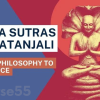Yoga Sūtras of Patañjali: The Seminal Text of the Yoga Tradition – Collection By Edwin Bryant
$149.00 Original price was: $149.00.$23.00Current price is: $23.00.
An Exploration of the Yoga Sūtras of Patañjali: A Comprehensive Review of Edwin F. Bryant’s Work
Content Proof:
The Yoga Sūtras of Patañjali is not merely a collection of aphorisms; it is a gateway into the vast ocean of yoga philosophy, an ancient discipline that continues to resonate with seekers of spiritual wisdom today. Edwin F. Bryant’s edition, entitled “The Yoga Sūtras of Patañjali: A New Edition, Translation, and Commentary,” offers a meticulous exploration of this seminal text, translating the wisdom encapsulated within its verses for contemporary audiences.
What makes this work particularly striking is its dual role as both a translation and an insightful commentary, which brings clarity and context to a 2,000-year-old philosophical framework. This article delves deeply into Bryant’s edition, examining its significance, core themes, and the ways it enriches the study and practice of yoga.
Historical Context and Significance of Patañjali’s Yoga Sūtras
The Yoga Sūtras were composed around the second century BCE and serve as the foundational text for the philosophy and practice of yoga. Patañjali, the sage attributed to this compilation, presents a systematic approach to understanding the self, consciousness, and the practices necessary for self-realization. The text distills complex philosophical ideas into 196 concise aphorisms, or sutras, which act as touchstones for practitioners navigating their spiritual journeys.
In Bryant’s edition, readers are not only presented with the original Sanskrit text but also with transliterations and precise English translations. This comprehensive approach demystifies the ancient language, making it accessible for modern practitioners and scholars alike. In fact, this commitment to clarity and rigor has earned praise from various quarters, allowing Bryant to bridge the gap between ancient wisdom and contemporary understanding.
Furthermore, the importance of context is emphasized; Bryant provides an extensive introduction that contextualizes Patañjali’s teachings within the broader tapestry of Indian philosophy. By interweaving historical insights, Bryant helps readers grasp the profound weight of the Yoga Sūtras and their enduring relevance to today’s spiritual landscape. This level of engagement with the text invites readers to consider not just the words themselves, but their implications for a holistic life grounded in mindfulness and self-awareness.
Core Themes Explored in Bryant’s Edition
Bryant’s work covers several essential themes that Patañjali explores, each contributing to a comprehensive understanding of yoga philosophy:
- Meditative Absorption (Dhyana): This section delves into the stages of meditation, articulating the process through which practitioners can achieve deeper states of awareness and connection with the self.
- The Practice of Yoga (Abhyasa and Vairagya): Focused on the dual approach of consistent practice and detachment, this theme emphasizes the balance necessary for effective spiritual development.
- Spiritual Powers (Siddhis): The sutras also touch upon the various spiritual powers that can arise through dedicated practice, offering insights into both the potential and pitfalls of such attainments.
By analyzing each theme with scholarly rigor, Bryant invites readers to explore not just the philosophical underpinnings but also practical applications of each concept in their own lives. For instance, his discussion on Dhyana encourages readers to contemplate techniques that foster mindfulness, drawing parallels to modern practices like mindfulness meditation thus revealing the timeless nature of Patañjali’s teachings.
Accessible Translation: Bridging Ancient Wisdom and Contemporary Practice
One of the standout features of Bryant’s edition is its user-friendly translation which is well-suited for western readers encountering the Yoga Sūtras for the first time. The meticulous attention to detail ensures that translations remain true to the original meanings while being strikingly readable. The clarity of Bryant’s language invites a broader audience into a world that might otherwise seem remote or esoteric.
In addition, Bryant’s commentary draws from classical interpretations of the Yoga Sūtras, weaving in insights from renowned scholars throughout history. This method enhances the reader’s understanding and appreciation of the text, showcasing how interpretations can evolve while remaining rooted in traditional practices. For instance, readers may find comparisons between Eastern philosophies and Western psychological theories, rendering the age-old wisdom of the Yoga Sūtras applicable to contemporary psychological discourse.
Bryant also enriches the text with practical exercises and reflections that align with each section of the sutras, encouraging readers to engage actively with the material. This hands-on approach not only solidifies understanding but also deepens the spiritual practice, making the teachings more resonant with daily life experiences.
Supporting Materials and Scholarly Integrity
The extent of Bryant’s scholarship is evident in the supplementary materials accompanying the text. For instance, the inclusion of a Sanskrit pronunciation guide empowers readers to pronounce key terms correctly, fostering a deeper connection with the linguistic roots of yoga. Moreover, a detailed bibliography invites further exploration, serving as a roadmap into the extensive literature surrounding yoga philosophy and practice.
The meticulous way in which these supplementary materials are crafted demonstrates Bryant’s commitment to educating the reader. Each element, from the pronunciation guide to the bibliography, enhances the experience of engaging with the Yoga Sūtras, showing readers not just how to read these ancient texts but also how to embody them in their practices.
Conclusion: Bridging Past and Present through Bryant’s Scholarship
In conclusion, Edwin F. Bryant’s “The Yoga Sūtras of Patañjali: A New Edition, Translation, and Commentary” stands as a remarkable contribution to the world of spiritual literature. By marrying ancient text with contemporary language and insights, Bryant paves the way for a deeper understanding of yoga that resonates with today’s spiritual seekers. The balance of detailed commentary, accessible translations, and rich contextual background makes this edition an invaluable resource, urging readers to investigate their own consciousness and the essence of their being.
This work is a testament to the enduring power of Patañjali’s teachings, affirming their continued relevance in an ever-evolving spiritual landscape. Through Bryant’s scholarship, the Yoga Sūtras emerge not as distant relics of the past, but as living texts, vibrant with meaning and possibility for all who seek to connect deeply with themselves and the world around them.
Frequently Asked Questions:
Business Model Innovation: We use a group buying strategy that enables participants to share costs and access popular courses at lower prices. This approach helps individuals with limited financial resources, although it may raise concerns among content creators regarding distribution methods.
Legal Considerations: Our operations navigate complex legal issues. While we do not have explicit permission from course creators to resell their content, there are no specific resale restrictions mentioned at the time of purchase. This lack of clarity allows us to offer affordable educational resources.
Quality Control: We guarantee that all course materials provided are identical to those offered directly by the creators. However, please note that we are not official providers. As a result, our services do not include:
– Live coaching calls or sessions with the course author
– Access to exclusive author-controlled groups or portals
– Membership in private forums
– Direct email support from the author or their team
Our goal is to make education more accessible by offering these courses independently, without the additional premium services available through official channels. We appreciate your understanding of our unique approach.
Be the first to review “Yoga Sūtras of Patañjali: The Seminal Text of the Yoga Tradition – Collection By Edwin Bryant” Cancel reply
You must be logged in to post a review.
Related products
Personal Development
Magnetic Gaze Level 1: Foundations – Fabricio Astelo – Bruno Martins – Charisma School
Personal Development
VIBE – Secrets of Masculine & Charismatic Body Language – Chris Archer
Personal Development
Personal Development
Personal Development
Personal Development
Unreal Series: Multiverse Key – Talmadge Harper – Harper Healing
Personal Development
Personal Development
Online – Master Planning for Life USA Aug 2020 – John Demartini (Videos Only)
Personal Development
Business
Personal Development
Premium Lucid Breakthrough Program – Stefan Zugor – HowToLucid
Personal Development
Personal Development



















Reviews
There are no reviews yet.